AMD Radeon HD 7870 GHz Edition & Radeon HD 7850 Review: Rounding Out Southern Islands
by Ryan Smith on March 5, 2012 12:01 AM ESTMeet The Radeon HD 7870 & Radeon HD 7850
For today’s review AMD sent over a 7870 and a 7850. Both are built on the 7870 reference design, so the cards are functionally identical except for the configuration of their respective GPU and the number of PCIe power sockets present.
For retail cards this will be very similar to the 7700 series launch, with partners doing semi-custom cards right away. In fact among the list of cards AMD sent us only Club3D will be using the complete 7870 reference design, while everyone else will be using the reference PCB along with their customary open air coolers. The 7850 will be even more divergent since AMD actually has a different, shorter reference PCB for these cards. Consequently our 7850 has very little in common with retail 7850s when it comes to their construction.
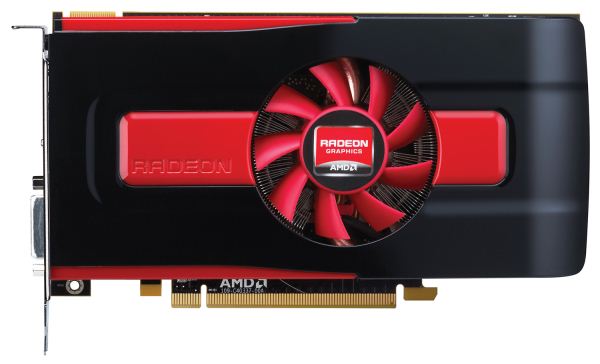
The Radeon HD 7850 Reference Design - Only Sampled To Partners
Starting as always with the cooler, the 7870 reference design is effectively a smaller version of the 7970 reference design. Here AMD is once again using a blower design with a slightly smaller blower, shrouded in the same hard red & black plastic as with the 7900. Underneath the shroud we find AMD’s heatsink, which utilizes a copper baseplate attached to 3 copper heatpipes, which in turn run into an aluminum heatsink that runs roughly half the length of the card. This is fairly typical for a blower design for a sub-200W card, but again almost all of the retail cards will be using a completely different open air design.
The 7870 PCB itself runs 9.5” long, with an additional .25” of shroud overhang bringing the total to 9.75”. Our card is equipped with 8 5GHz 256MB Hynix GDDR5 memory chips, the same 5GHz chips that we saw on the 7700 series. For the 7870 power is provided by a pair of 6pin PCIe power socket, while the sub-150W 7850 uses a single socket. Both cards feature a single CrossFire connector, allowing them to be paired up in a 2-way CrossFire configuration.
Meanwhile for display connectivity AMD is using the same configuration as we’ve seen on the 7900 series: 1 DL-DVI port, 1 HDMI port, and 2 miniDP ports. Interestingly, unlike the 7900 series and 7700 series there is a set of pads for a second DVI port on the card, and while AMD doesn’t make use of them at least one XFX card will. The 7800 series as the same display configuration options as the 7900 series though, so while it can drive up to 6 monitors it can only drive 2 TMDS type displays at once, and if you want to drive a full 6 monitors you’ll need a MST hub.
Finally, I wanted to touch on marketing for a bit. We typically don’t go into any detail on marketing, but with the 7800 something AMD did caught my eye. One of AMD’s marketing angles will be to pitch the 7800 series as an upgrade for the 5800 series; AMD doesn’t typically pitch cards as upgrades in this manner, and the 5800 comparison is especially odd.
At 2.5 years old the 5800 series is no longer the video card king but it’s also not particularly outdated; other than tessellation performance it has held up well relative to newer cards. More specifically, the 7800 series performance is roughly equal to the 6900 series, and while the 6900 series as a step up from the 5800 series it was not a massive leap. With its $350/$250 MSRP the 7800 series has common pricing with the 5800 series, but at only 20-40% faster than the 5800 it’s not the kind of step up in performance that typically justifies such a large purchase. Of course AMD’s conservative pricing has a lot to do with this, but at the end of the day it’s odd to call the 7800 series the upgrade for the 5800 series when the 7950 is the more natural upgrade from a performance perspective.


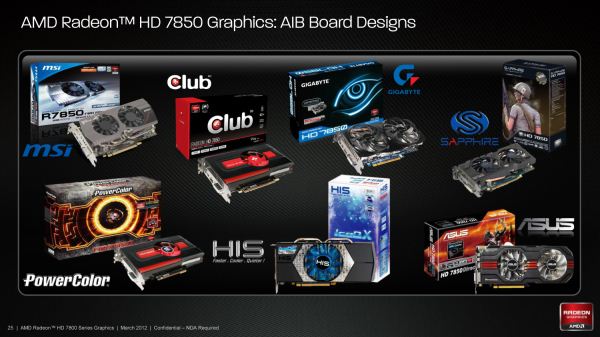
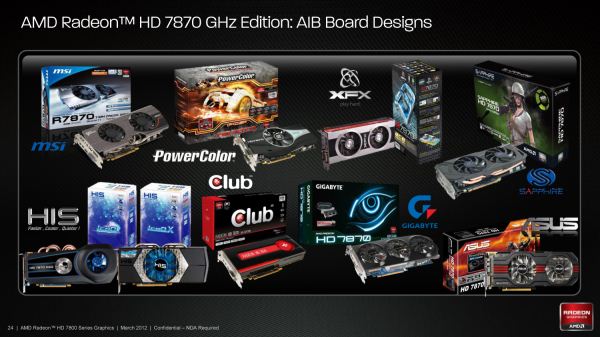

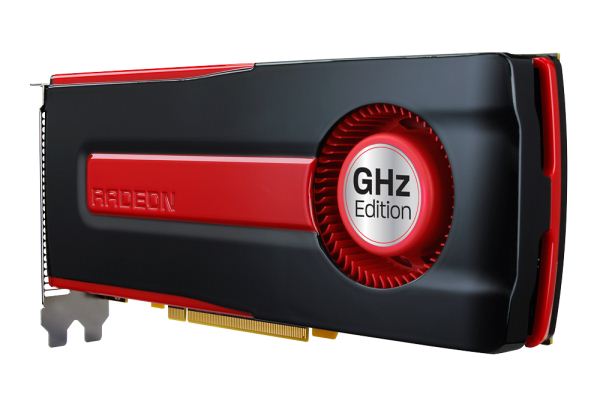












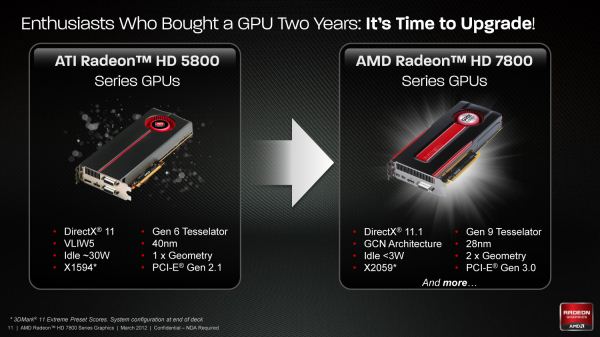








173 Comments
View All Comments
arjuna1 - Monday, March 5, 2012 - link
Metro 2033 (the highest settings bench)Radeon 7950 33fps
Radeon 6970 27.5fps
Radeon 6870 32fps (the second highest bench)
Weee!!! $400+ for 5.5fps more.
Not sure about you, but to me, spending that kind of cash for an imperceptible increase in performance is having no sense of money's worth.
This generation of cards can safely be skipped until the 8xxx/7xx series from both AMD and NVIDIA.
Death666Angel - Tuesday, March 6, 2012 - link
Picking up one specific benchmark to underline your point. Great reasoning skills, you should join a debate team! Also, that 5.5fps is still 20%, with the good track record of overclockability, it can reach as much as 40%. But you stick to your point.arjuna1 - Tuesday, March 6, 2012 - link
What? were you expecting me to post a powerpoint presentation for just for you??The numbers are there, look at them if you want, but hey, be stuck in your point, only a frustrated basement geek can think in way to justify spending $400 +/- for less than 50% increase in performance.
Be careful of not falling of that horse, seems pretty high.
sseemaku - Tuesday, March 6, 2012 - link
Please check the avg frame rate improvements, not some specific results. But everyone agrees that 7xxx cards are a bit overpriced and that's because they don't have competition right now. If you worry about power consumption, buy these cards now. Or more interested in price/performance, wait till Kepler is released.arjuna1 - Tuesday, March 6, 2012 - link
I can agree with that, after Kepler is release prices will go down and maybe then the 7xxx series will increase in the perceived value.CeriseCogburn - Thursday, March 8, 2012 - link
If there's no competition then they aren't overpriced because they cannot be touched by anything, hence making their price absolutely correct !!!I call that "reality".
If Kepler blows their doors off, their price will fall. That's reality too.
It's time for all the amd is cheaper crud to go the way of the dinosaur.
Recently a 460 was an unbeatable value. Then a 560ti was as unbeatable value. Currently a 6870 is an unbeatable value.
These things happen, and a deal is not the general aspect of the video card prices, which generally speaking wind up right where they should be.
The deal is the exception to the usual rule across the board, and "the deal" as in "big price drop" is usually just one card here or there for a short period of time.
CeriseCogburn - Thursday, March 8, 2012 - link
Radeon cards have been coming out at $700 and $600 and $500+ for a long time man - even with competition.I don't know what planet you people come from when the constant repetition of "it sounds good" becomes an absolute meme and ongoing restated theme but in no way reflects even a tiny kernel of truth as far as reality goes.
CeriseCogburn - Friday, March 9, 2012 - link
Yes dagamer34, Ryan praises amd for drying up their 6000 series channel with such precision. Then we get this praise - the perfect price structure by AMD, and "it's conservative pricing" according to the author even though it's $40 and $30 higher than it's Nvidia counterpart..." With AMD targeting the ~$320 570 and ~$210 560 Ti and given their conservative pricing on the rest of Southern Islands, it should come as no surprise that the 7800 series is priced equally conservatively. The 7870 will have an MSRP of $350, while the 7850 will have an MSRP of $250. With the 7800 series completing the launch of Southern Islands, this gives AMD a consistent price structure for the entire family: $550, $450, $350, $250, $159, and $109."
---
I see. So more expensive is conservative, and the 6 AMD price figures are perfect and consistent...
I am so sick of it...
Falkenad2 - Monday, March 5, 2012 - link
Thus far, AMD's first foray into 28nm graphics has been unimpressive. From a price/performance standpoint, the 7000 series has not given the usual incentives for upgrading that is regularly associated with the move to a new node. I hope a strong competitor from nVidia is on the way, as that would bode well for consumers such as ourselves. As it stands, the 7000 series lacks value except at the very high end, where price/performance is of little concern.Kaboose - Monday, March 5, 2012 - link
Price vs. performance is not the only factor, some people are concerned with power draw as well. Others are interested in temps, and noise. The price could use some work (come on Nvidia) but besides that the 7xxx series has been fairly impressive in regards to overclocking, power, temp, and noise.